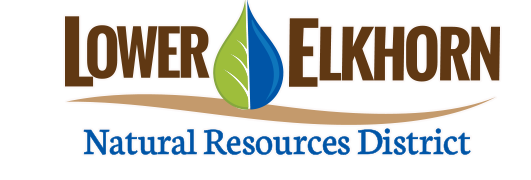Conservation Programs > No-Till Incentive Program | Urban Conservation | Recreation Area Development Program | Soil Conservation | Best Practices | Wildlife
Urban Conservation Assistance Program
The Urban Conservation Assistance Program is an authorized program of the District to provide technical and financial assistance to units of government (cities, counties, villages, and schools) to help prevent or control erosion, flooding, and related resource concerns in urbanized areas.
A. Criteria for Eligible Projects
- Each project must be sponsored by a city, village, county or school and located on publicly owned land;
- Project must conform with the comprehensive plan for the municipality and provide primarily public benefits;
- Eligible project components:
- Permanent grade stabilization structures.
- Channel stabilization measures (liners, gabions, weirs, etc.).
- Diversions and terraces.
- Permanent seeding, sodding, and mulching of critical areas ($100 per acre maximum).
- Design, construction, and construction inspection of eligible components.
- An enclosed storm sewer is not an eligible practice.
- Projects must conform to all local, state, and federal laws.
- Project Sponsor's labor, equipment or materials are not eligible project costs (must be contracted).
- First time applicants and low amounts of previous grants have priority over recent recipients.
B. District Responsibilities
- Administer the Urban Conservation Assistance Program.
- Review and prioritize all applications for assistance.
- Reimburse sponsors up to 50% of the eligible local costs (i.e., excluding state and federal funds) of an approved and completed project up to a maximum of $25,000.
- The District reserves the right to approve or reject plans, specifications, and/or implementation schedules, and entire project applications.
C. Sponsor Requirements
- The sponsor shall complete application on Districts' Form 110A.
- The sponsor shall submit preliminary plans with the application. The following items should be included:
- Project plan.
- Itemized estimated cost.
- Implementation schedule.
- Location map.
- The sponsor shall execute the District's Special Project Operation and Maintenance Agreement, Form 110b, upon approval of funding and before starting work on the project.
- The sponsor shall provide all necessary land rights at no cost to the NRD.
- The sponsor shall obtain all necessary local, state, and federal permits.
- The sponsor shall administer all contracts for design, construction, and construction observation for the project.
- The sponsor shall control all erosion on the site during and after construction.
- The sponsor shall hold and save the District free from damages or claims due to the construction, operation, and maintenance of the project.
- The approved application becomes an agreement with the District which includes these guidelines.
D. Requesting Reimbursement
- Upon completion of the project, the Sponsor may request reimbursement from the District by providing a final report including:
- Letter summarizing the work completed.
- Listing of all project expenditures.
- Copies of all receipts that have been paid.
- The use of participant's labor, equipment or materials will not be considered a part of the grant project.
E. Definitions
Flood Control
- A reduction in the amount of water which escapes from a stream or other natural drainageway and inundates or overflows adjacent land area; or
- A reduction in the amount of land area overflowed by water escaping from a stream or other natural drainageway. Source: Nebraska Resources Development Fund Guidelines, May 1990
Drainage
- To rid the land of its superfluous moisture by adopting or improving natural watercourses and supplementing them, when necessary, by ditches or other artificial means. Source: Nebraska Resources Development Fund Guidelines, May 1990
Flood Water
- Floodwater is water that spills over the banks of a watercourse in times of high water and flows over adjacent lands in the floodplain, returning to the stream at a downstream point. Source: Policy Issue Study - Drainage of Diffused Surface Water, May 1982
Stormwater Management
- Stormwater management is often distinguished from floodplain management in terms of the "direction" in which floodwaters enter a structure or property. If the water is on its way to a major stream when it floods a property, it is "storm water". If the water is rising up from a stream, it is "flood water". Source: Andrew J Reese, Ogden Environmental and Energy Services, Inc., in Lincoln - Stormwater Management Program Report 1997
